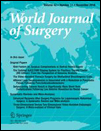Pediatric Appendicitis Severity in KwaZulu-Natal, South Africa: A Retrospective Cohort Analysis
This study was presented at the 12th Academic Surgical Congress on February 8, 2017 in Las Vegas, NV, USA.
Abstract
Background
Acute appendicitis is a common pediatric surgical emergency; however, there are few grading systems to assign disease severity. The American Association for the Surgery of Trauma (AAST) recently developed a grading system for a variety of emergency surgical conditions, including appendicitis. The severity of acute appendicitis in younger patients in KwaZulu-Natal (South Africa) is unknown. We aimed to describe the disease severity in this patient population using the AAST grading system hypothesizing that the AAST grade would correlate with morbidity, management type, and duration of stay.
Materials
Single institutional review of patients <18 years old with a final diagnosis of acute appendicitis during 2010–2016 in KwaZulu-Natal, South Africa, was performed. Demographics, physiologic and symptom data, procedural details, postoperative complications, and Clavien–Dindo classification were abstracted. AAST grades were generated based on intraoperative findings. Summary, univariate, and nominal logistic regression analyses were performed to compare AAST grade and outcomes.
Results
A total of 401 patients were identified with median [IQR] age of 11 [5–13], 65% male. Appendectomy was performed in all patients; 2.4% laparoscopic, 37.6% limited incision, and 60% midline laparotomy. Complications occurred in 41.6%, most commonly unplanned relaparotomy (22.4%), surgical site infection (8.9%), pneumonia (7.2%), and acute renal failure (2.9%). Complication rate and median length of stay increased with greater AAST grade (all p < 0.001). AAST grade was independently associated with increased risk of complications.
Conclusion
Pediatric appendicitis is a morbid disease in a developing middle-income country. The AAST grading system is generalizable and accurately corresponds with management strategies as well as key clinical outcomes.
Level of evidence
Retrospective study, Level IV.
Study type
Retrospective single institutional study.




